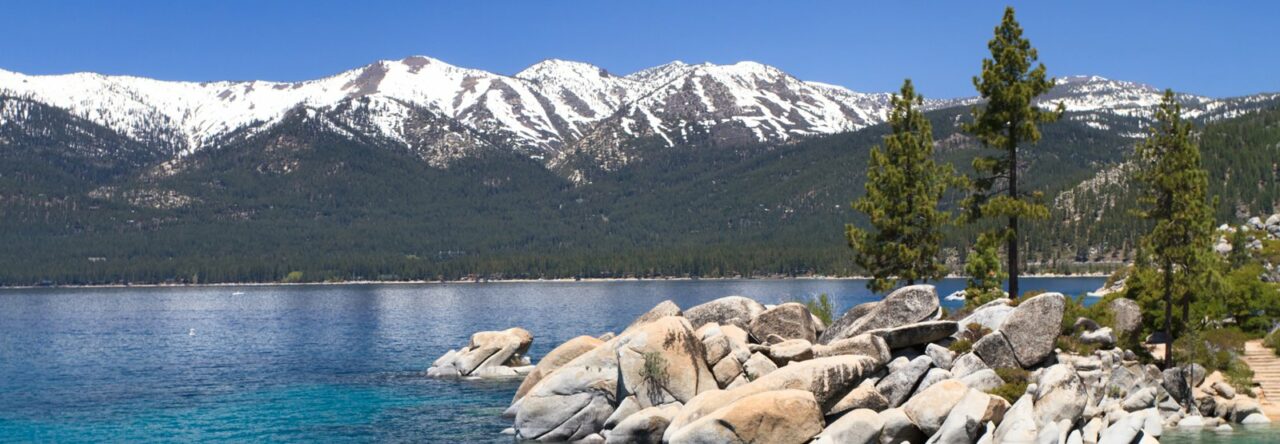Although we are on our own schedule I feel like we haven’t stopped moving. Part of it is there is so much to do and see and part of it is the weather. We have to fit some of this in before the weather really changes. We got back from our walk and went straight to the visitor center in Colter Bay to get the girls started on their junior ranger badges for Teton. Its interesting seeing the difference in all the rangers within the various parks.
This visitor center up near Colter Bay has a big focus on Native American culture and features different artists each week. Edwin bought the girls obsidian arrow point necklaces from Willy a member of the Shoshone / Blackfoot tribes. His wife Debbie, also a member of the Shoshone tribe makes jewelry from beads and porcupine quills. She explained that porcupines do NOT “shoot” their quills. In fact, you can catch porcupines safely if you grab from under their tail. She removes less than 25% of its quills so they still have some for defense. Within 6 weeks the quills grow back. I asked how has my dog, well old dog Dozer, has been “attacked” three times by porcupines. She explained that porcupines only slam their tail upwards in defense if something gets close. While the girls are spending time doing their homework in the visitor center it gave us time to hang out and talk to the artists and one the rangers who is also from a local tribe. Willy, the artist who specializes in obsidian and arrow heads appreciated the time and ended up giving the girls a piece of obsidian before its in its final form. He then demonstrated how he works with the obsidian. Not with hammers and screwdrivers…but he uses elk antler, deer antler, and buffalo skin to protect his hand and thigh. Edwin then decided to go out and grab our Hungarian bows to show him and it was pretty cool how excited he was to see a similar style of bow just with a different type of artistry.







Oh yeah, and no big deal…but the Debbie’s great great grandfather was Sacajawea’s brother.

The ranger, Laine Thom, who was working this morning was also featured in the exhibit. Here’s some other Native American information we read.


Indians used the brains of the bison to preserve the hides of the buffalo. Brains contain oils which lubricate the hide fibers and allow them to be softened by pulling and stretching. The hides were then smoked to complete the tanning process. Tanned hides were cleaned by rubbing with a pumice stone or clay ball because washing them would remove the tanning oils. These brain-tanned hides can remain soft and pliable for centuries.

Indian women’s most valuable item was their sewing pouch. With their sewing pouch they could prepare and sew their family’s tipi, make moccasins, and other clothing.

We decided to change campgrounds so we could check out the southern part of the park where you have a better chance of spotting moose. We called ahead, and there was only 1 spot left. We high-tailed it down there and yes we got it. Edwin and I have been having good luck with our camping spot mojo. On top of that we heard there was a moose in the campground near the amphitheater so we followed the people with their giant cameras. Not only was their one moose but 3. Two females and one giant bull moose. How lucky are we. They were bedded down and just hanging out. We were pretty close, and stuck next to a bunch of trees just in case.







The sun was out. We got a camping spot. We just saw moose. It was only lunchtime and the day was already feeling complete. Actually we saw 3 moose. A bull and 2 females. They were right at the edge of the campground in the meadow near the road. Its easy to see a moose because really you spot about 10-20 people with 2 foot long cameras in bunches. This bull moose was impressive. He was huge! The rangers said it was the biggest bull moose they have seen in a while. We felt lucky. And we were close. About 30 feet away. With 2 females nearby. All 3 were bedded down so we just hung out behind a tree and watched for awhile.



We finished our afternoon with a hike to Taggart Lake and the aspens are really starting the change color. It was a beautiful trail and just felt good to feel the sun on us for a change. It was still cold, but at least we were able to take off our down jackets for a change.





Quick tidbit on the science behind fall colors…During the spring and summer, leaves use sunlight to generate food for the plant. Chlorophyll harnesses the sun’s energy to covert carbon dioxide CO2 and water into carbohydrates or food. This gives leaves their green color. In the fall, with less daylight hours and lower temperatures, the leaves stop generating food. The chlorophyll breaks down and the green color disappears allowing other pigments to become visible. The yellow/orange colors are from carotenoids (easy to remember – carrot – orange/yellow). The leaves that generate red pigments, anthocyanins are due to excess water and sugars. Temperature and moisture control the intensity and duration of the colors.

We made it back to camp at a reasonable hour after a quick stop at Mormon Row and Edwin made the most delicious salmon alfredo pasta. Feeling especially grateful this evening. Goodnight.


